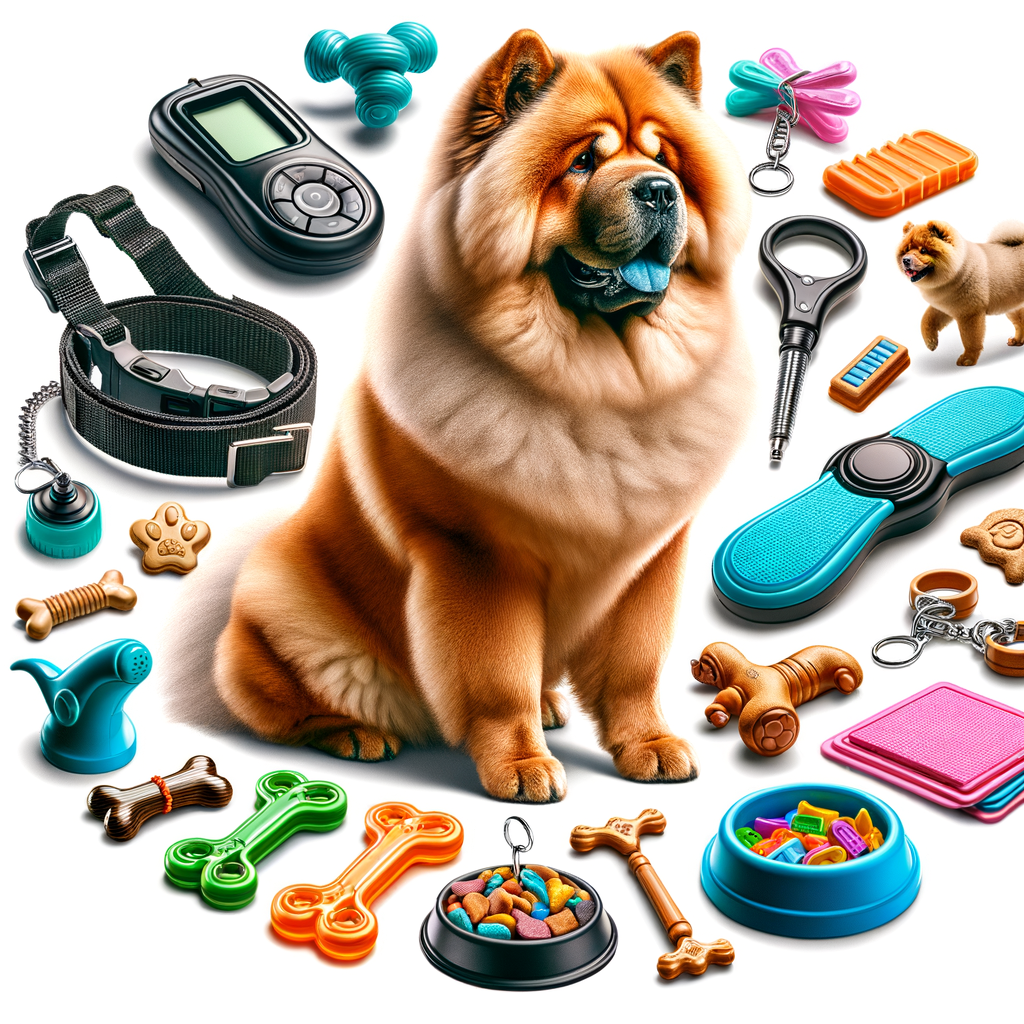
Introduction to Chow Chow Training
Training your Chow Chow is a crucial part of their development and overall well-being. This article will provide you with the necessary insights and tips to make this process easier and more effective. Let’s delve into the world of Chow Chow training.
Training your Chow Chow is not just about teaching them to sit, stay, or fetch. It’s about instilling good manners, enhancing their social skills, and building a strong bond between you and your furry friend. A well-trained Chow Chow is not only a delight to live with but also contributes positively to society. They are less likely to cause trouble or become a nuisance to others.
Chow Chows are known for their independent and stubborn nature, which can make training a bit challenging. They are not as eager to please their owners as other breeds, and they can be quite resistant to commands. However, with the right approach, patience, and consistency, you can overcome these challenges and successfully train your Chow Chow.
Remember, every Chow Chow is unique and will respond differently to training. What works for one might not work for another. The key is to understand your dog’s personality and tailor your training methods accordingly.
As we delve deeper into the specifics of Chow Chow training, we will discuss puppy training, behavior training, obedience training, and share some successful training stories. Stay tuned to learn more about how to train your Chow Chow effectively.
Chow Chow Puppy Training
Training your Chow Chow puppy can be an exciting journey. With the right tools and techniques, you can help your puppy grow into a well-behaved and loving companion. Here, we will discuss some of the best training aids for Chow Chow puppies.
Best Chow Chow Training Aids for Puppies
There are several tools that can assist you in training your Chow Chow puppy. These aids not only make the training process easier but also more effective. Let’s take a look at some of them:
- Training Pads: Training pads are essential for house training your Chow Chow puppy. They are designed to absorb urine and are a great tool for teaching your puppy where it’s acceptable to relieve themselves. Remember, consistency is key when using training pads.
- Puppy Teething Toys: Teething can be a challenging time for puppies. Teething toys not only provide relief from the discomfort of teething but also keep your puppy occupied, reducing the chances of them chewing on inappropriate items.
- Clickers for Reward-Based Training: Clickers are a fantastic tool for reward-based training. The sound of the clicker serves as a signal to the puppy that they have done something right, followed by a treat. This helps your puppy understand what behaviors are encouraged.
These aids can significantly enhance your puppy’s learning experience, making training more enjoyable for both you and your puppy. Remember, every puppy is unique, and what works for one might not work for another. It’s important to be patient and try different tools to see what works best for your Chow Chow puppy.
Effective Training Techniques for Chow Chow Puppies
Training your Chow Chow puppy can be a rewarding experience when you apply the right techniques. Let’s explore three effective methods that can help you shape your puppy’s behavior and habits.
-
- Positive Reinforcement
Positive reinforcement is a powerful tool for training Chow Chow puppies. This technique involves rewarding good behavior, which encourages the puppy to repeat it. For instance, when your puppy sits on command, you can reward it with a treat or a pat on the head. This method is not only effective but also builds a strong bond between you and your puppy.
-
- Socialization
Socialization is crucial for Chow Chow puppies. Introducing your puppy to different environments, people, and other animals at a young age can help them become well-adjusted adults. You can start by taking your puppy to controlled environments like puppy classes or parks. Remember, the goal is to make these experiences positive for your puppy.
-
- Crate Training
Crate training can be an effective technique for house training your Chow Chow puppy. The crate serves as a safe space for your puppy and can also aid in preventing destructive behavior when you’re not around. Start by introducing the crate gradually and make sure it’s a positive experience for your puppy. Over time, your puppy will start to see the crate as its own space.
In conclusion, training your Chow Chow puppy requires patience and consistency. By using positive reinforcement, socialization, and crate training, you can ensure that your puppy grows into a well-behaved and sociable dog. Remember, every puppy is unique, so it’s important to adjust your training techniques to suit your puppy’s individual needs and personality.
Chow Chow Behavior Training
Training a Chow Chow can be a challenging task, especially when it comes to behavior training. This breed is known for its stubbornness and independence, which can make training a bit difficult. However, with the right tools and techniques, you can successfully train your Chow Chow and manage their behavior effectively.
Training Aids for Chow Chows with Behavioral Issues
There are several training aids available in the market that can help you manage your Chow Chow’s behavioral issues. Here are some of the most effective ones:
- Anti-bark collars: These collars are designed to discourage excessive barking. When your Chow Chow barks, the collar emits a sound or a mild electric shock that interrupts the barking. This helps your pet associate barking with an unpleasant experience, thus reducing the frequency of barking.
- Behavioral training mats: These mats are designed to discourage your pet from entering certain areas of your home. When your Chow Chow steps on the mat, it emits a mild electric shock or a sound that discourages them from stepping on it again. This can be particularly useful if your pet has a habit of entering rooms they shouldn’t.
- Calming treats and supplements: These are designed to help reduce anxiety and stress in your pet. They contain natural ingredients like chamomile and tryptophan that have calming effects. These can be particularly useful if your Chow Chow has issues with aggression or anxiety.
Remember, these training aids are just tools to assist you in training your Chow Chow. They should be used in conjunction with proper training techniques and not as a substitute for them. Always consult with a professional trainer or a vet before using any training aid.
Effective Behavior Training Techniques for Chow Chows
Training a Chow Chow can be a rewarding experience when done correctly. Here are some effective techniques to help you guide your furry friend towards better behavior:
-
- Consistency in commands
Consistency is key when training any dog, and Chow Chows are no exception. Use the same commands for each action you want your dog to perform. This helps your pet understand what you expect from them. For example, if you want your Chow Chow to sit, always use the word “sit” and not interchange it with “down”. This consistency helps your dog associate the command with the action, making training more effective.
-
- Ignoring unwanted behavior
Ignoring unwanted behavior is a powerful training technique. When your Chow Chow exhibits behavior you don’t want, such as barking excessively, simply ignore them. Don’t give them any attention, positive or negative. This shows your dog that their behavior doesn’t get them what they want. Over time, they will learn to stop these unwanted behaviors.
-
- Professional behavioral training
If you’re having trouble training your Chow Chow, don’t hesitate to seek help from a professional. Professional dog trainers have the knowledge and experience to handle various behavioral issues. They can provide you with techniques and strategies tailored to your Chow Chow’s specific needs. Remember, it’s never a failure to ask for help. In fact, it shows your commitment to providing the best for your pet.
In conclusion, training a Chow Chow requires patience, consistency, and sometimes professional help. But with these techniques, you can help your pet become a well-behaved member of your family.
Chow Chow Obedience Training
Training your Chow Chow for obedience is an essential part of their upbringing. It not only helps in maintaining a harmonious household but also ensures the safety and well-being of your pet. In this section, we will discuss the best tools for Chow Chow obedience training.
Best Training Tools for Chow Chow Obedience
There are several tools available to aid in the obedience training of your Chow Chow. Here are the top three that experts recommend:
-
- Training Leashes and Collars
Training leashes and collars are fundamental tools for obedience training. They help you guide your Chow Chow’s movements and teach them to follow your commands. It’s important to choose a comfortable collar and a sturdy leash that can withstand the strength of a Chow Chow.
-
- Obedience Training Clickers
Clickers are a popular tool in obedience training. They produce a distinct sound that acts as a signal to your Chow Chow, helping them understand when they’ve performed a command correctly. This sound-based reward system can be highly effective in reinforcing positive behavior.
-
- Treat Pouches for Reward-Based Training
Reward-based training is a proven method for teaching obedience, and treat pouches are an essential tool for this approach. By rewarding your Chow Chow with a treat from the pouch when they follow a command, you reinforce the positive behavior and encourage them to repeat it.
Remember, the key to successful obedience training is consistency and patience. Use these tools effectively and regularly to see the best results. In the next section, we will discuss some effective obedience training techniques for Chow Chows.
Effective Obedience Training Techniques for Chow Chows
Training a Chow Chow can be a rewarding experience when done correctly. Here are some effective obedience training techniques that can help you and your furry friend enjoy a harmonious relationship.
-
- Command Training
Command training is a fundamental part of obedience training. It involves teaching your Chow Chow to respond to specific commands such as ‘sit’, ‘stay’, ‘come’, and ‘heel’. Start with simple commands and gradually introduce more complex ones. Remember, patience and consistency are key. Reward your pet with treats or praise when they successfully follow a command. This positive reinforcement encourages them to repeat the behavior.
-
- Leash Training
Leash training is essential for the safety and control of your Chow Chow. This technique teaches your dog to walk calmly on a leash without pulling or tugging. Start this training in a quiet, familiar environment before gradually introducing distractions. Use a short leash to start with, and give your dog plenty of praise and treats for walking nicely. If your Chow Chow pulls on the leash, stop walking. Only continue when they stop pulling. This will teach them that pulling gets them nowhere.
-
- Professional Obedience Classes
Professional obedience classes can be a great resource for training your Chow Chow. These classes provide structured learning environments where your dog can learn to follow commands, behave properly around other dogs and people, and respond to you even with distractions. A professional trainer can also provide personalized advice based on your Chow Chow’s behavior and temperament. Remember, it’s never too early or too late to start obedience classes.
In conclusion, effective obedience training for Chow Chows involves command training, leash training, and professional obedience classes. Each technique plays a crucial role in shaping your dog’s behavior. Remember, patience and consistency are key in dog training. With time and effort, your Chow Chow can become a well-behaved and obedient companion.
Case Studies: Successful Chow Chow Training Stories
Let’s explore some real-life stories of Chow Chow owners who have successfully trained their pets. These case studies will provide you with practical insights and strategies that you can apply in your own training journey.
Case Study 1: Overcoming Aggression with Training Aids
Our first case study involves a Chow Chow named Max. Max was known for his aggressive behavior, especially towards strangers. His owners were concerned and decided to seek professional help.
The trainer suggested using training aids, such as a clicker and a treat pouch. The clicker was used to mark the exact moment Max behaved correctly, followed by a treat from the pouch as a reward. This method is known as positive reinforcement.
| Training Aid | Usage |
|---|---|
| Clicker | Used to mark the exact moment of good behavior |
| Treat Pouch | Used to reward good behavior immediately after the click |
Over time, Max started associating the click sound with positive behavior, which resulted in a decrease in his aggressive tendencies. His owners were consistent and patient, and their efforts paid off. Max’s aggression was successfully managed with the help of training aids and a well-thought-out training plan.
“Patience, consistency, and the right training aids were the key to transforming Max’s behavior. It wasn’t an overnight change, but the results were worth the effort.” – Max’s Owner
Max’s story is a testament to the power of positive reinforcement and the effective use of training aids. It proves that with the right approach, even aggressive behavior can be managed successfully.
Case Study 2: Successful Obedience Training for a Stubborn Chow Chow
Meet Max, a stubborn Chow Chow who was known for his disobedience. Max’s owner, Mrs. Smith, had tried everything to get him to follow commands, but nothing seemed to work. This is the story of how Max transformed from a stubborn Chow Chow to an obedient pet.
The Problem:
Max was a stubborn Chow Chow who refused to follow basic commands. He would often ignore calls, refuse to sit or stay, and had a habit of running away when off-leash. This behavior was not only frustrating for Mrs. Smith but also posed a safety risk for Max.
The Approach:
After trying various methods without success, Mrs. Smith decided to hire a professional dog trainer. The trainer identified that Max was not responding to commands because he didn’t understand them. He suggested an obedience training program that focused on teaching Max the meaning of commands and rewarding him for following them.
| Training Method | Result |
|---|---|
| Verbal Commands | Max started responding to basic commands like ‘sit’, ‘stay’, and ‘come’. |
| Reward-Based Training | Max began to associate following commands with receiving treats, leading to improved obedience. |
| Consistent Training | Regular training sessions helped Max understand and remember commands better. |
The Outcome:
After several weeks of consistent obedience training, Max’s behavior started to change. He began responding to commands and stopped running away when off-leash. Mrs. Smith was thrilled with the transformation and felt more confident in her ability to control Max.
“Obedience training has made a world of difference for Max. He’s happier, safer, and easier to manage. I can’t recommend it enough for stubborn Chow Chows like him,” says Mrs. Smith.
This case study shows that even the most stubborn Chow Chow can become obedient with the right training approach. It highlights the importance of understanding your dog’s behavior and using consistent, reward-based training methods.
Case Study 3: Transforming a Shy Chow Chow with Socialization Techniques
Let’s delve into our third case study, where we successfully transformed a shy Chow Chow using socialization techniques. This case study will provide a clear understanding of how to handle a Chow Chow that is introverted and hesitant in social situations.
Meet Bella, a 2-year-old Chow Chow who was extremely shy and fearful of people and other dogs. Bella’s owner, Mrs. Johnson, was concerned about Bella’s behavior and sought professional help.
The Challenge
Bella’s shyness was not only affecting her quality of life, but it was also causing stress for Mrs. Johnson. Bella would often hide when visitors came over and would tremble when taken to the park. Mrs. Johnson was desperate for a solution.
The Approach
Our training approach focused on gradual socialization techniques. We started by introducing Bella to new environments slowly, ensuring she felt safe and comfortable. We also used positive reinforcement, rewarding Bella with treats and praise whenever she showed signs of overcoming her fear.
The Results
After several weeks of consistent training, Bella began to show signs of improvement. She started to interact more with Mrs. Johnson’s friends and even began playing with other dogs at the park. Mrs. Johnson was thrilled with the progress Bella had made.
| Training Duration | Techniques Used | Outcome |
|---|---|---|
| 8 weeks | Gradual exposure, Positive reinforcement | Bella became more social and less fearful |
This case study demonstrates the power of patience and consistency in training a shy Chow Chow. Remember, every dog is unique and may require different training techniques. The key is to understand your dog’s needs and tailor the training accordingly.
“Training a dog is not a one-size-fits-all. It requires patience, understanding, and a lot of love. But the results are worth it.” – Mrs. Johnson
Conclusion: The Importance of Consistency and Patience in Chow Chow Training
As we wrap up our discussion on Chow Chow training, it’s crucial to remember two key elements: consistency and patience. Training your Chow Chow isn’t a one-time event, but a continuous process that requires both these qualities in abundance.
Let’s take a moment to recap why these two traits are so important in Chow Chow training:
| Consistency | Patience |
|---|---|
| Chow Chows are intelligent dogs that quickly pick up on patterns. Consistent training helps them understand what is expected of them, making the training process smoother and more effective. | Chow Chows are known for their stubbornness. Patience is key in dealing with this trait. It may take time for your Chow Chow to learn new commands or behaviors, but with patience, they will eventually get there. |
Remember the case studies we discussed earlier? Each of those success stories had one thing in common: the owners were consistent and patient in their approach to training. They understood that training a Chow Chow isn’t about quick fixes, but about building a strong, trusting relationship with their pet over time.
As the saying goes, “Rome wasn’t built in a day.” The same applies to training your Chow Chow. It’s a journey, not a destination. So, don’t be disheartened if progress seems slow. Keep practicing, stay consistent, and be patient. Your efforts will pay off in the end, resulting in a well-behaved, happy, and confident Chow Chow.
In conclusion, training your Chow Chow can be a rewarding experience if approached with the right mindset. Remember, consistency and patience aren’t just about training your dog; they’re about building a bond with your furry friend that will last a lifetime.














